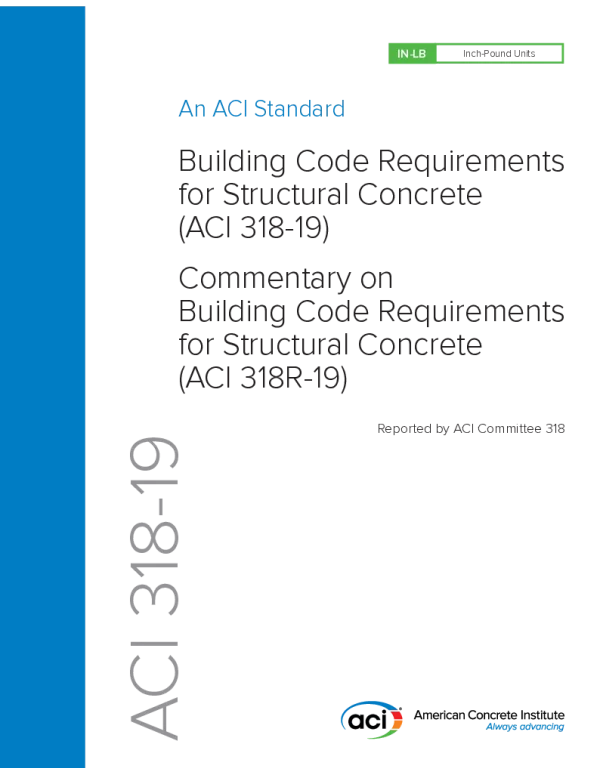-
资源简介
The ACI 318-19 Building Code Requirements for Structural Concrete is a comprehensive document that provides the minimum requirements for the design and construction of structural concrete. It is developed by the American Concrete Institute (ACI) and is widely recognized as one of the most important standards in the field of structural engineering. The code serves as a critical reference for engineers, architects, contractors, and other professionals involved in the design and construction of buildings and other structures.
First published in 1929, the ACI 318 code has undergone several revisions to keep pace with advancements in materials, technology, and construction practices. The 2019 edition, known as ACI 318-19, reflects the latest research, industry practices, and innovations in the field of structural concrete. This edition incorporates updates and improvements based on extensive review and input from experts across the globe, ensuring that it remains relevant and applicable to modern construction projects.
One of the key aspects of ACI 318-19 is its focus on safety, durability, and performance of structural concrete elements. The code outlines specific requirements for the design of various structural components such as beams, columns, slabs, and foundations. It also addresses the use of different types of concrete, including normal weight, lightweight, and high-performance concrete, providing guidelines for their proper application in different structural systems.
The code includes detailed provisions for the design of reinforced and prestressed concrete structures, covering both strength and serviceability requirements. It provides formulas, equations, and design procedures that are essential for calculating the load capacities and deformations of structural elements. These provisions help ensure that structures can withstand the expected loads and environmental conditions throughout their intended service life.
In addition to design requirements, ACI 318-19 also covers construction-related topics such as material specifications, placement, curing, and quality control. These aspects are crucial for ensuring that the designed structures are built according to the specified standards and that the quality of concrete meets the required performance criteria. The code emphasizes the importance of proper construction practices in achieving the desired structural integrity and long-term durability.
Another significant feature of ACI 318-19 is its alignment with other building codes and standards, such as the International Building Code (IBC) and the ASCE/SEI 7 standard for minimum design loads. This alignment ensures consistency and compatibility among different regulatory frameworks, facilitating the design and approval process for construction projects. Engineers and designers often refer to these codes in conjunction with ACI 318-19 to meet the overall requirements of a project.
The code also includes provisions for special structures and applications, such as seismic-resistant systems, high-rise buildings, and structures exposed to aggressive environments. These specialized requirements reflect the growing complexity of modern construction and the need for tailored design approaches that address unique challenges. By incorporating these provisions, ACI 318-19 helps ensure that structures are not only safe but also resilient under various loading and environmental conditions.
Furthermore, the ACI 318-19 code is supported by technical documents, commentary, and supplementary resources that provide additional guidance and explanations for its provisions. These resources are invaluable for practitioners who seek to understand the rationale behind specific design requirements and how to apply them effectively in real-world scenarios. The availability of such materials enhances the usability and practicality of the code in professional settings.
Overall, ACI 318-19 serves as an essential tool for ensuring the quality, safety, and performance of structural concrete in construction projects. Its comprehensive coverage, up-to-date information, and alignment with industry standards make it a vital reference for professionals in the field. As the construction industry continues to evolve, the ongoing development and revision of this code will remain crucial in meeting the demands of modern infrastructure and ensuring the longevity of built environments.
-
封面预览

-
下载说明
预览图若存在模糊、缺失、乱码、空白等现象,仅为图片呈现问题,不影响文档的下载及阅读体验。
当文档总页数显著少于常规篇幅时,建议审慎下载。
资源简介仅为单方陈述,其信息维度可能存在局限,供参考时需结合实际情况综合研判。
如遇下载中断、文件损坏或链接失效,可提交错误报告,客服将予以及时处理。